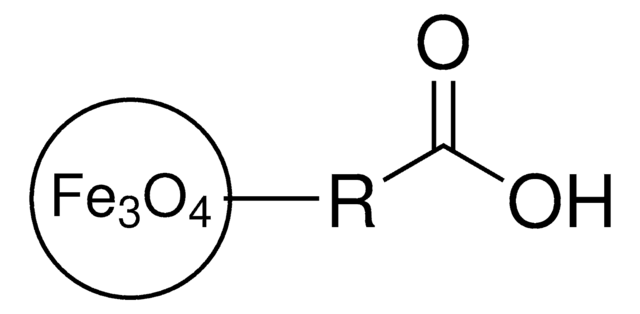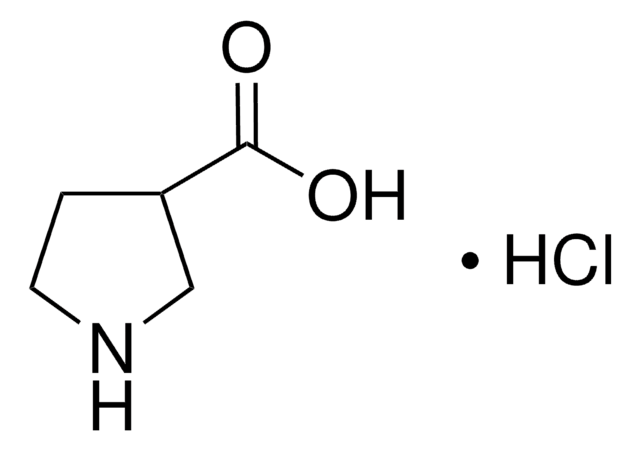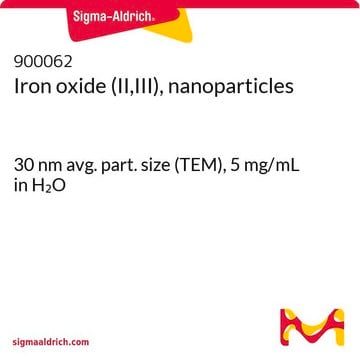747327
Iron oxide(II,III), magnetic nanoparticles solution
30 nm avg. part. size (TEM), amine functionalized, 1 mg/mL Fe in H2O, dispersion
Sinónimos:
Fe NP NH2, FexOy, Magnetic iron oxide nanocrystals, Magnetite, Superparamagnetic iron oxide nanoparticles
About This Item
Productos recomendados
formulario
dispersion
nanoparticles
concentración
1 mg/mL Fe in H2O
magnetización
>45 emu/g, at room temperature; under 4500 Oe
color
black
tam. prom. pieza
30 nm (TEM)
densidad
~1 g/mL at 25 °C
grupo funcional
amine
temp. de almacenamiento
2-8°C
cadena SMILES
O=[Fe].O=[Fe]O[Fe]=O
InChI
1S/3Fe.4O
Clave InChI
SZVJSHCCFOBDDC-UHFFFAOYSA-N
¿Está buscando productos similares? Visita Guía de comparación de productos
Categorías relacionadas
Descripción general
Aplicación
Información legal
Código de clase de almacenamiento
12 - Non Combustible Liquids
Clase de riesgo para el agua (WGK)
WGK 2
Punto de inflamabilidad (°F)
Not applicable
Punto de inflamabilidad (°C)
Not applicable
Certificados de análisis (COA)
Busque Certificados de análisis (COA) introduciendo el número de lote del producto. Los números de lote se encuentran en la etiqueta del producto después de las palabras «Lot» o «Batch»
¿Ya tiene este producto?
Encuentre la documentación para los productos que ha comprado recientemente en la Biblioteca de documentos.
Los clientes también vieron
Artículos
Iron oxide nanoparticles find diverse applications in magnetic data storage, biosensing, and drug delivery due to their properties.
Explore DNA-functionalized nanoparticles in sensors for precise target analyte detection. Learn about types, synthesis, functionalization, and design optimization, with insights into challenges and prospects.
Professor Mitsuhiro Ebara provides insights on several types of smart nanofiber mesh systems that have been explored for different drug delivery purposes.
The recent emergence of a number of highly functional nanomaterials has enabled new approaches to the understanding, diagnosis, and treatment of cancer.
Nuestro equipo de científicos tiene experiencia en todas las áreas de investigación: Ciencias de la vida, Ciencia de los materiales, Síntesis química, Cromatografía, Analítica y muchas otras.
Póngase en contacto con el Servicio técnico


